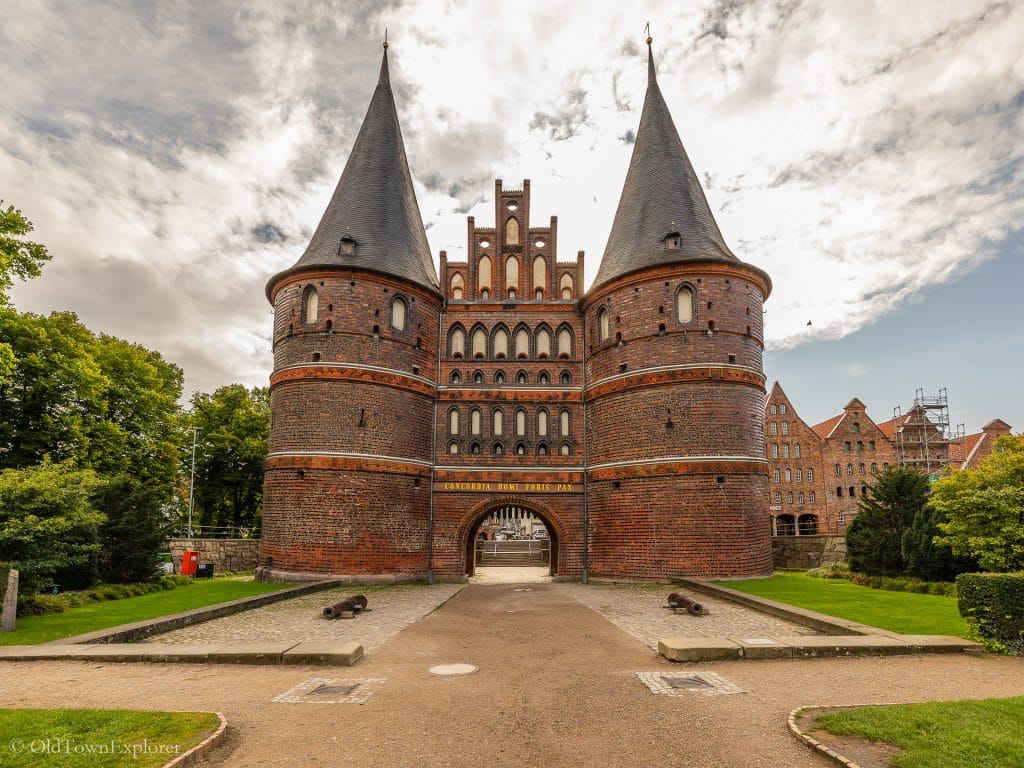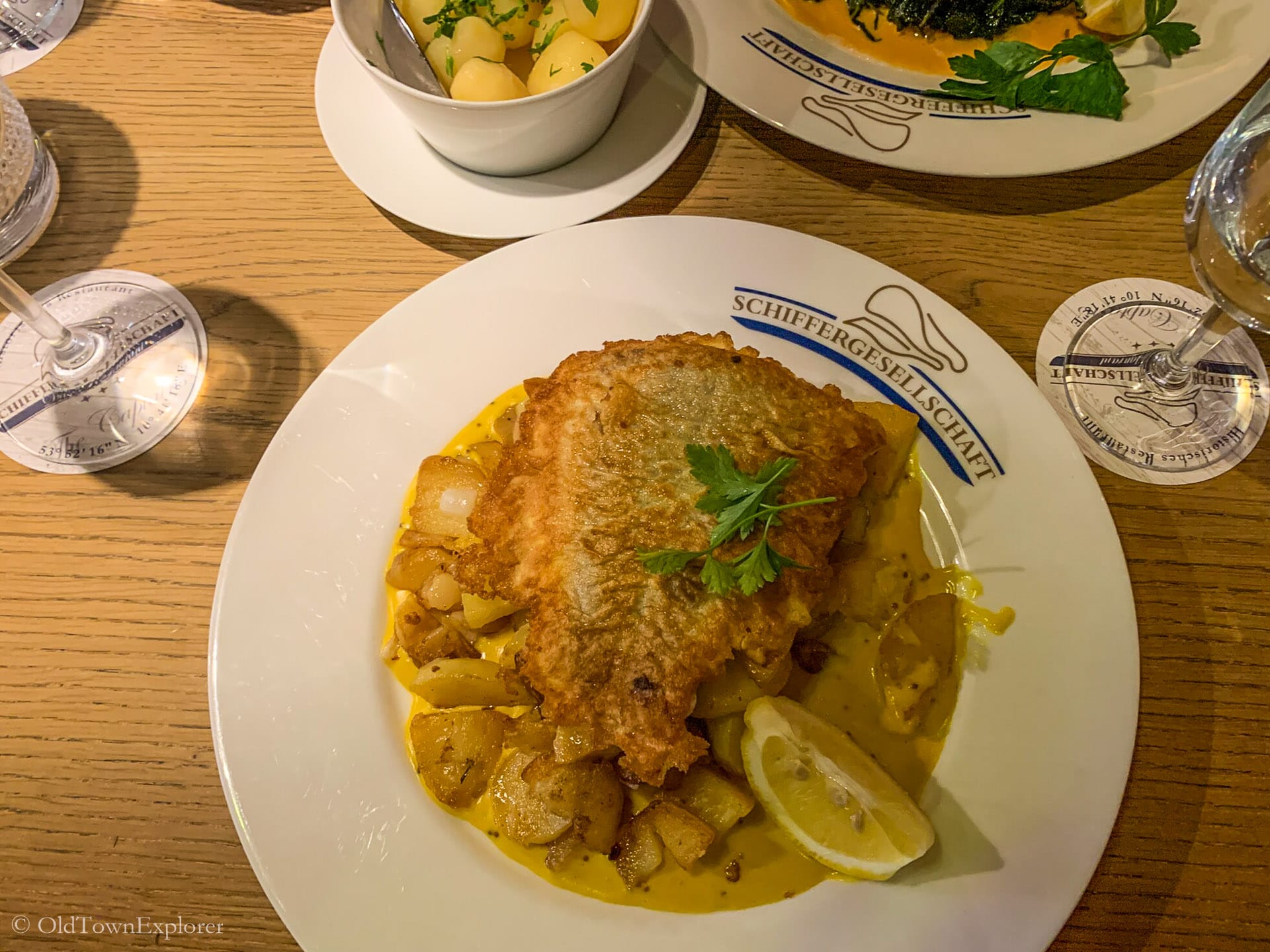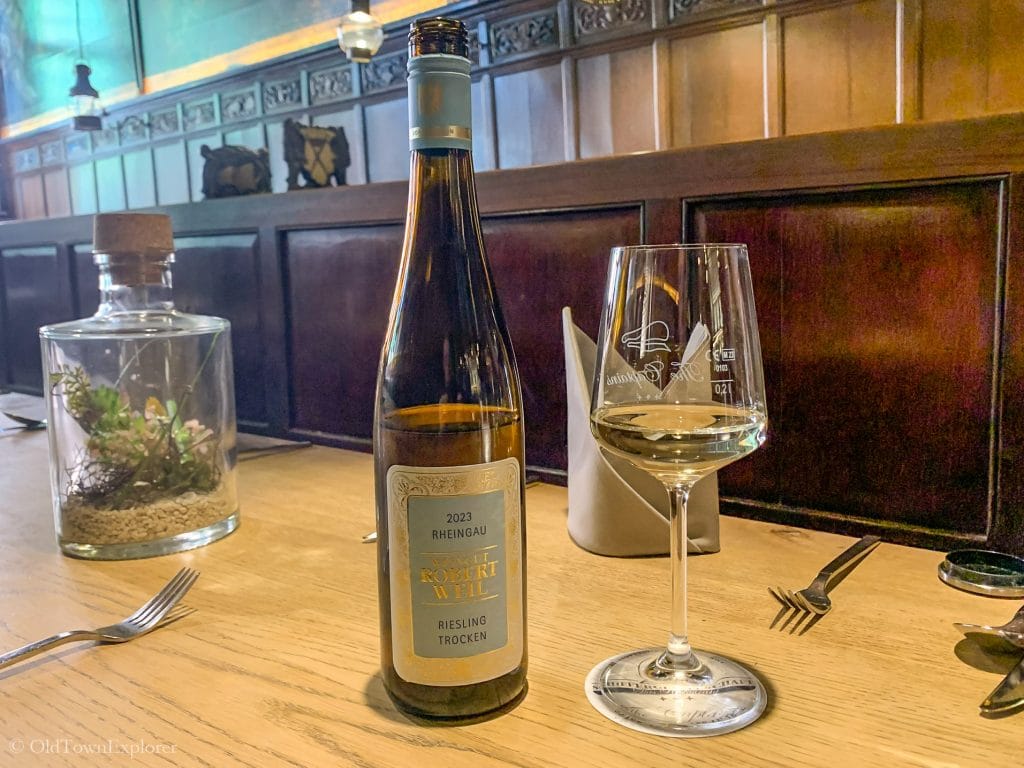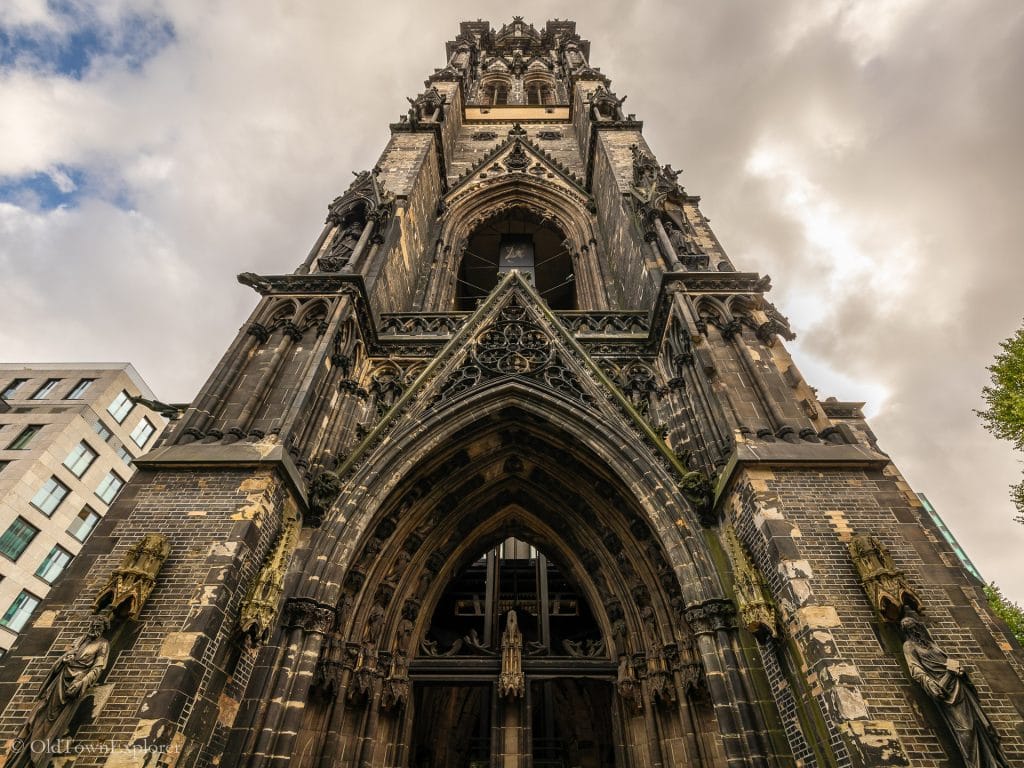Germany
Explore Germany: Food, Wine, and Architecture
Germany is a large and historically layered country in central Europe, bordered by nine other nations and shaped by distinct regional identities. Its cities and towns reflect a long continuum of cultural and political change—from Roman foundations and medieval market centers to Baroque capitals, industrial hubs, and reunified metropolises. Visitors can explore Gothic cathedrals, timber-framed villages, vineyard landscapes, and Bauhaus-era cityscapes across its 16 federal states.
We spent a significant amount of time in Germany researching food, wine, and architecture. This guide shares what we learned along the way, including practical tips and personal recommendations.
This website contains affiliate links that may earn us a small commission at no additional cost to you.
Lübeck
Lübeck sits on the Trave River near the Baltic Sea in northern Germany, defined by its flat maritime terrain and medieval waterways. Once a leading city of the Hanseatic League, its Old Town is ringed by brick Gothic churches, gabled warehouses, and the iconic Holstentor gate.
The local food and wine scene features marzipan confections, smoked fish, and northern German white wines like Elbling and Müller-Thurgau.

Future Destinations
We enjoyed our first trip to Germany and look forward to returning in the future.
Bamberg
TBD
Quedlinburg
TBD
Regensburg
TBD
Germany Food
Germany’s food culture is deeply tied to its regional diversity and agricultural heritage. From Bavarian sausages and Swabian noodles to northern fish stews and Rhineland pastries, traditional dishes reflect local ingredients and long-standing customs. Many products—like Black Forest ham and Allgäu cheese—hold protected status, offering travelers a rich and varied culinary experience rooted in place.
Local Food Products
Protected Designation of Origin (PDO)
- Allgäuer Bergkäse
- Allgäuer Emmentaler
- Altenburger Ziegenkäse
- Odenwälder Frühstückskäse
Protected Geographical Indication (PGI)
- Hessischer Handkäse
- Holsteiner Tilsiter
- Nieheimer Käse
- Aachener Printen
- Nürnberger Lebkuchen

Traditional Dishes
Appetizers & Starters
- Bavarian cheese spread
- Bavarian sausage salad
- Pretzels
- Sausage & meat boards
Soups
- Potato soup
- Goulash soup
- Lentil soup
- Liver dumpling soup
Main Dishes
- Viennese schnitzel
- German meat patties
- Rouladen
- Linsen mit Spätzle
- Käsespätzle
- Roast pork
Side Dishes
- Potato salad
- Spätzle
- Braised red cabbage
- Onion cake
Desserts
- Bee-sting cake
- Germknödel
- Apple Strudel
- Butter cake
Germany Wine
Wine plays an important role in Germany’s cultural and agricultural identity, especially in regions along the Rhine and Mosel rivers. The country is known for its diverse terroirs and world-class white wines, particularly Riesling, which thrives in steep, slate-rich vineyards. Germany’s 13 wine regions each offer distinctive styles and grape varieties—from crisp Silvaner in Franconia to elegant Pinot Noir (Spätburgunder) in Baden.
Wine Regions
- Ahr
- Baden
- Franconia
- Hessische Bergstraße
- Mittelrhein
- Mosel
- Nahe
- Palatinate
- Rheingau
- Rheinhessen
- Saale‑Unstrut
- Saxony
- Württemberg

Grape Varieties
White Grapes
- Riesling
- Müller‑Thurgau
- Pinot Blanc
- Pinot Gris
- Silvaner
- Scheurebe
- Other Whites
Black (Red) Grapes
- Pinot Noir
- Dornfelder
- Trollinger
- Blaufränkisch
- Pinot Meunier
- Other Reds
Germany Architecture
Germany’s architecture reflects more than a thousand years of evolving styles—from Romanesque churches and Gothic cathedrals to Baroque palaces, Bauhaus modernism, and postwar reconstruction. Travelers can explore medieval town centers, timber-framed villages, and grand imperial monuments, as well as bold contemporary structures. Many sites, including the Cologne Cathedral and Bauhaus buildings, are recognized as UNESCO World Heritage Sites, offering a layered look at Germany’s architectural heritage and historical evolution.

Architectural Styles
- Romanesque
- Gothic
- Sondergotik (Late Gothic)
- Renaissance
- Baroque & Rococo
- Neoclassicism
- Historicism & Rundbogenstil
- Jugendstil
- Bauhaus & Modernism
- Postmodernism & Contemporary
UNESCO World Heritage Sites
- Aachen Cathedral
- Collegiate Church, Castle and Old Town of Quedlinburg
- Cologne Cathedral
- Hanseatic City of Lübeck
- Historic Centres of Stralsund and Wismar
- Jewish‑Medieval Heritage of Erfurt
- Museumsinsel (Museum Island), Berlin
- Old Town of Regensburg with Stadtamhof
- Palaces and Parks of Potsdam and Berlin
- Roman Monuments, Cathedral of St. Peter and Church of Our Lady in Trier
- Speyer Cathedral
- St. Mary’s Cathedral and St. Michael’s Church at Hildesheim
- Palaces of King Ludwig II of Bavaria: Neuschwanstein, Linderhof, Schachen and Herrenchiemsee
- Town of Bamberg
Where Is Germany Located?
Germany is located in Central Europe and shares borders with nine countries: Denmark to the north, Poland and Czechia to the east, Austria and Switzerland to the south, and France, Luxembourg, Belgium, and the Netherlands to the west. It stretches from the North Sea and Baltic coastlines to the northern edge of the Alps.
Regional Overview of Germany
Germany’s 16 federal states (Bundesländer) vary widely in landscape, architecture, and cultural traditions. This diversity is reflected in the country’s regional foods, wine styles, and building heritage, making each area distinct for travelers.
Southern Germany: Bavaria and Baden-Württemberg
The southern states are shaped by Alpine geography, Roman Catholic traditions, and strong regional identities. Bavaria is known for Baroque churches, beer culture, and historic towns like Bamberg and Regensburg. Baden-Württemberg offers a mix of Swabian architecture, Black Forest landscapes, and wine-producing regions along the Neckar.
Central Germany: Hesse, Thuringia, Saxony
Central Germany preserves some of the country’s most important cultural legacies. Hesse is home to Frankfurt and timber-framed towns like Marburg; Thuringia and Saxony feature Gothic cathedrals, Reformation-era buildings, and classical music heritage in cities like Weimar and Leipzig.
Northern Germany: Schleswig-Holstein, Lower Saxony, Bremen, Hamburg, Mecklenburg-Vorpommern
The north is defined by flat coastal plains, brick Gothic churches, and maritime trade. Hanseatic cities like Lübeck, Hamburg, and Wismar showcase gabled warehouses, medieval ports, and North Sea cuisine. Fishing villages, lighthouses, and wind-swept islands are central to the region’s identity.
Western Germany: Rhineland-Palatinate, Saarland, North Rhine–Westphalia
This region blends Roman, medieval, and industrial heritage. Cities like Cologne, Trier, and Aachen feature Gothic cathedrals and Roman ruins, while the Rhine and Mosel valleys support historic wine towns. Industrial areas in the Ruhr now house museums and UNESCO-listed sites.
Eastern Germany: Berlin, Brandenburg, Saxony-Anhalt, Saxony, Thuringia
The eastern states reflect Prussian administrative legacy, GDR-era urbanism, and efforts at historic preservation and reuse. Berlin combines imperial monuments with Bauhaus buildings and postwar reconstructions. Dresden and Potsdam offer Baroque and Rococo ensembles, while smaller cities retain medieval street plans.
When to Visit Germany
Germany’s varied climate and cultural calendar make it a destination with something to offer in every season. Travel conditions, festivals, and regional experiences shift with the weather, offering distinct opportunities throughout the year.
Spring (April–June)
Spring is a transitional season marked by mild temperatures, blossoming landscapes, and fewer tourists. It’s an excellent time for city sightseeing, hiking, and visiting gardens or castles before peak summer crowds arrive.
Summer (June–August)
Summer is the high season for travel in Germany. Warm weather and long daylight hours make it ideal for outdoor festivals, river cruises, and wine tours. Tourist sites can be crowded, especially in major cities and along popular routes like the Romantic Road.
Autumn (September–October)
Autumn brings crisp air, fall colors, and regional harvest festivals. This is one of the best times to explore Germany’s wine regions, attend Oktoberfest in Munich, or enjoy scenic drives through forested areas like the Black Forest and Saxon Switzerland.
Winter (November–February)
Winter is cold and dark but offers distinct cultural experiences. Traditional Christmas markets transform town squares with lights, music, and seasonal foods. In alpine regions, ski resorts attract winter sports travelers, while historic towns offer a quieter, festive atmosphere.
Getting Around Germany
Germany offers efficient and reliable transportation options that make it easy to travel between cities and into historic regions.
Trains and Regional Rail
Germany’s national railway system, operated by Deutsche Bahn, includes high-speed ICE trains for long-distance travel and regional trains connecting smaller towns. Routes are frequent and generally punctual, with major hubs like Berlin, Frankfurt, and Munich offering international connections as well.
Urban Transit
Public transportation in German cities is well-organized and includes U-Bahn (subways), S-Bahn (commuter trains), buses, and trams. Tickets are typically integrated across modes and regions, with day passes and contactless payment options available in most areas.
Driving and Car Rental
Renting a car is useful for accessing rural wine regions, historic villages, or scenic routes like the Romantic Road. Roads are well-maintained, though parking can be restricted or costly in city centers. Autobahns have unrestricted speed zones, but local roads often require careful navigation through traffic-calmed areas.
Buses and Budget Travel
Long-distance buses, operated by companies like FlixBus, provide low-cost alternatives to train travel. They serve both major cities and smaller destinations, though travel times are longer. Buses are also a good option for budget-conscious travelers or those planning last-minute trips.
Whether by train, public transit, or car, travelers can access both urban centers and rural areas with minimal difficulty.
FAQs About Germany
What food is Germany known for?
Germany is known for hearty dishes like Bratwurst, Sauerbraten, Schnitzel, and Pretzels, as well as regional specialties such as Käsespätzle in Swabia and Labskaus in the north.
What is the most popular drink in Germany besides beer?
Besides beer, wine is widely consumed—especially Riesling, which is Germany’s signature white wine. Regional wines are often served in traditional Weinstuben (wine taverns) and at seasonal wine festivals.
Which German region is best for wine?
Top wine regions include the Mosel, Rheingau, Pfalz, and Baden, each known for distinctive grape varieties like Riesling, Silvaner, or Spätburgunder (Pinot Noir).
What is traditional German architecture like?
Traditional German architecture includes half-timbered houses (Fachwerkhäuser), Gothic cathedrals, Baroque palaces, and Romanesque churches, with styles varying by region and period.
Where can I see half-timbered houses in Germany?
Well-preserved half-timbered buildings can be found in towns like Quedlinburg, Goslar, Wernigerode, and along the German Timber-Frame Road.
Are any UNESCO sites in Germany known for architecture?
Yes—Germany has many UNESCO sites recognized for their architecture, including Cologne Cathedral, Bauhaus Dessau, Würzburg Residence, and the Palaces of Ludwig II.
What is a traditional German meal?
A typical German meal includes a main dish like meat or sausage, a side such as potatoes, red cabbage, or sauerkraut, and often ends with a dessert like Apfelstrudel.
Is German wine sweet or dry?
German wine comes in both sweet and dry styles. Riesling, for example, can range from bone-dry to lusciously sweet, with labeling terms like “Trocken” (dry) helping guide buyers.
